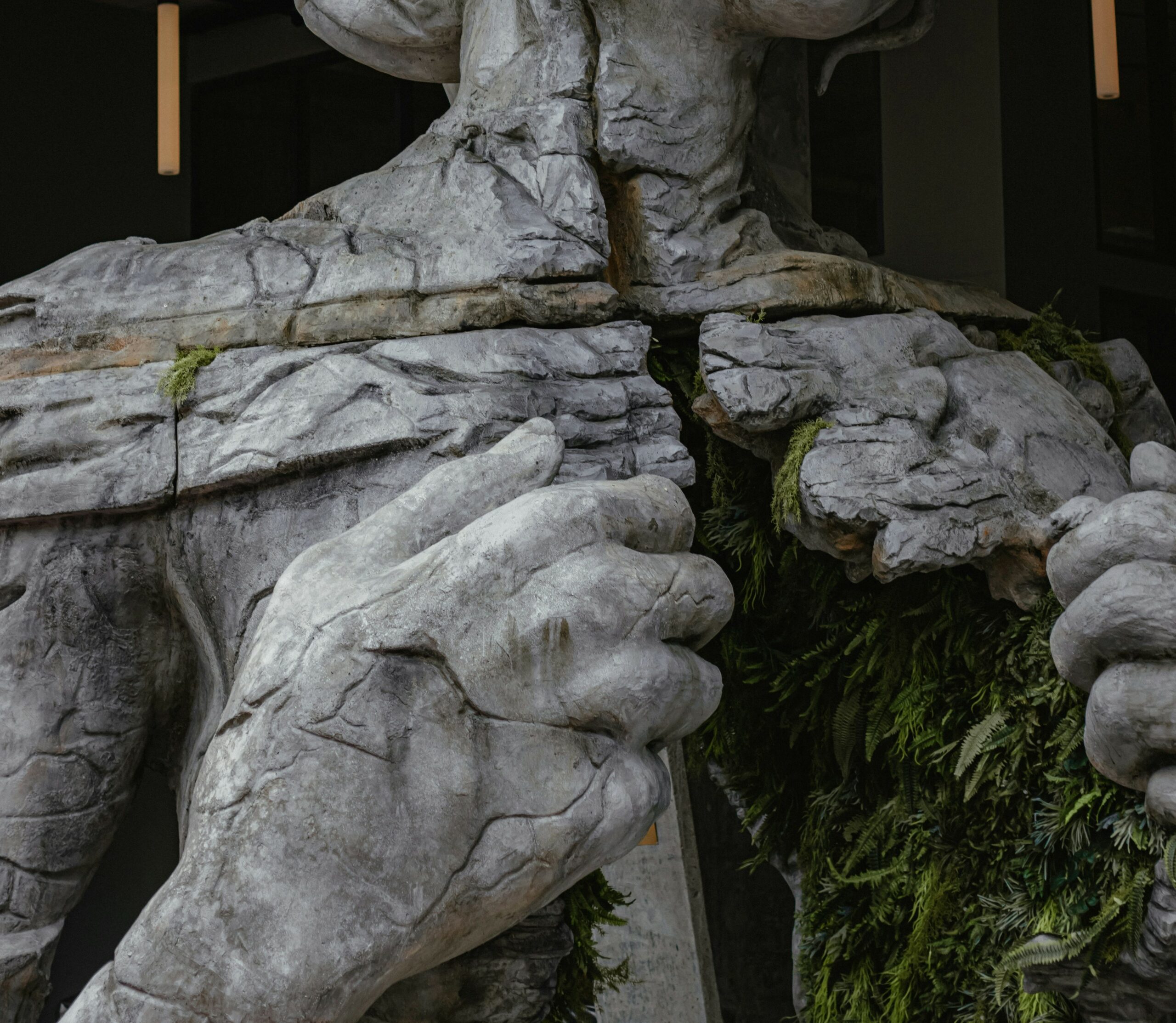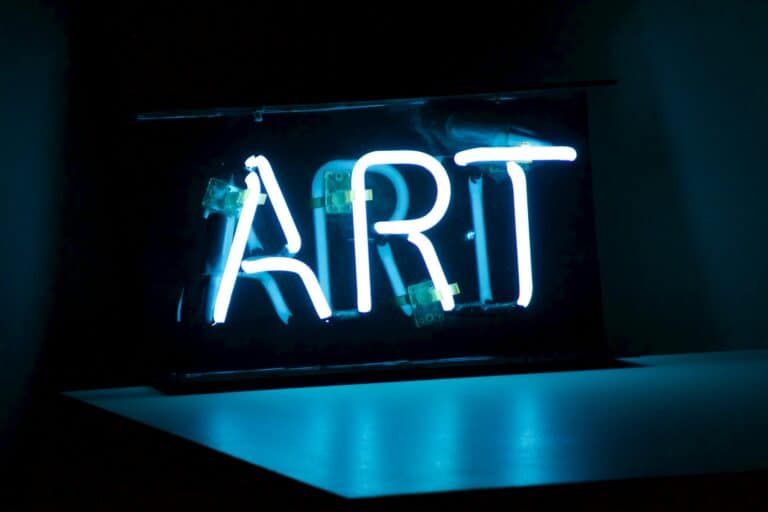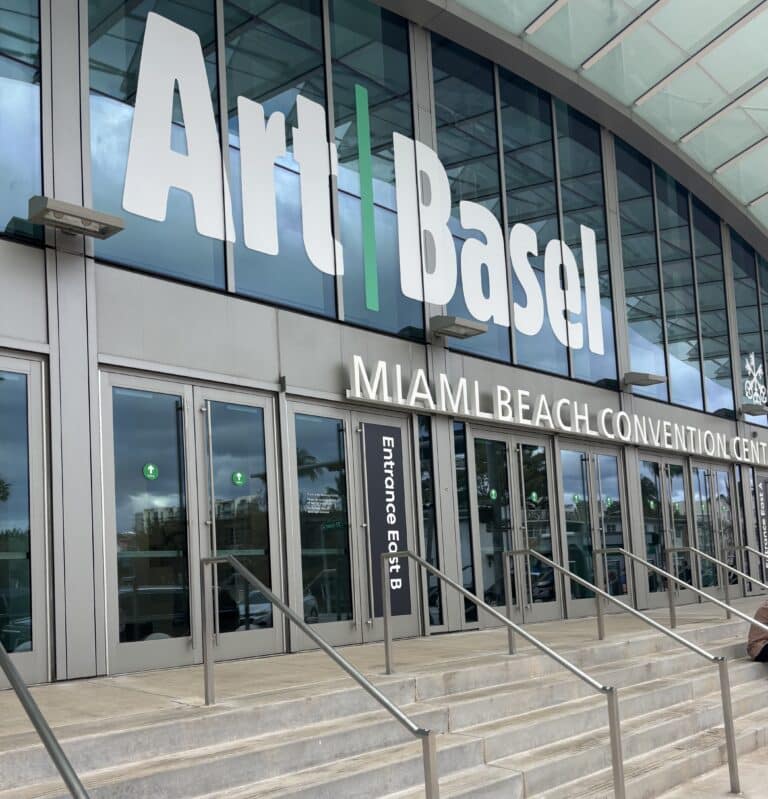From the public art of ancient Greece and Rome to the private collections of the world’s wealthiest patrons, people have always found avenues for art consumption and appreciation.
The secondary art market—which encompasses the re-sale of art after its initial purchase from the artist—began to morph into its modern iteration around the 17th century. In this article, we explore how the ecosystem of art acquisition developed from early auction houses and galleries to culminate in the new generation of online art sales.
Though art auctions can be traced back to Roman times, they lapsed for centuries before establishing themselves again in the 1600s. The first auction house opened in Stockholm in 1674. Around the same time, galleries, with their sales-focused approach to art exhibition, were encouraging the emergence of a new breed of collector, one who turned from collecting any item of significance to pursuing art in particular.
Though they existed as long ago as the Renaissance, the 17th century also saw art dealers come into their trade anew, as the primary purveyors and tastemakers. The most successful dealers had the capacity to shape the coming trends and impact what sold—and for how much—on the art market as a whole.
The primacy of the art gallery
Art galleries have a commanding reputation, and their distinction is well deserved. For centuries, galleries have served as the primary champions of visual artists and bestowed patrons upon new and established artists alike. With this niche role came the a type of exclusivity of the gallery and, while vital for artists’ careers, the “uninitiated” have felt real or perceived barriers to participation.
Commercial art galleries, with their distinct architectural spaces, present a mysterious world of rarified visual art and, without prices posted or written explanations, the transactional nature of the gallery is shrouded in a type of insider culture.
Sadly, in recent years, public trust in galleries has been called into question due to the missteps of a very few. We read weekly of the galleries around the world that are embroiled in legal battles, owing millions to artists and sellers and standing accused of selling forgeries and stolen works. While the majority of dealers are experts in their fields who work with integrity in the art trade, the unregulated art market can be fertile ground for less than worthy activities.
The auction at work
Auction houses set themselves apart from the gallery with their more public face, which appeals to estate sellers and individuals who can easily acquire auction estimates and a clear understanding of a sale. Auction sales do not come without risk for buyer and sellers.
In addition to significant fees charged to both buyer and seller, artworks at auction are not priced based on appraisals, per sé, but rather estimates that could reflect the auction house internal agenda versus market value. Additionally, sellers enter into agreements that cannot be broken without penalties. Last, the actual realized sale prices can be over or under market value and dependent on variables in the salesroom and on that day.

The rise of online platforms
All retail businesses across various sectors must adapt to the online world – traditional art galleries are similarly affected by the move to virtual commerce. Online art sales make up 16% of global art sales – and this amounts to $4 billion USD per year in online sales. Art platforms have developed to serve a wide demographic, art buyers of every experience level, and to offer opportunities to browse art in comfort and confidence.
Online marketplaces expand the general accessibility of the gallery experience, enabling people anywhere to view and purchase artworks from major centres and to bring the works of far-off artists onto their screens and walls with unprecedented ease. This global access positively impacts artists as well, vastly increasing their reach and customer base.
Inevitably, though, the convenience and easy access made possible by the advent of the internet also make these platforms a veritable free-for-all in terms of provenance, price, and quality. While the potential for self-led research continues to grow, misinformation also persists. Though it undeniably fosters exclusion, the expert curation so perfected and sought-after in the gallery has many proven benefits, as well.
As these online platforms continue to lead the contemporary art market charge, an alternative that combines the expertise of the gallery space with the accessibility of the online space is imperative. That’s where ArtRow comes in.
Read more: Pricing and Validation in the Art Market
ArtRow: The best of both worlds
Historically, one of the primary draws of galleries has been the highly curated nature of the collections. The customer knows that what they see before them has been selected by an expert eye, one that follows the trends and the market.
This expertise can come with exclusivity and high fees. As a result of these factors, the key questions art buyers have around what they ought to buy, investment value, and how to recognize a fair price are too often manipulated or left unanswered.
Addressing uncertainty: “What should I buy?”
ArtRow navigates the middle ground between gallery and open market with decades of expertise. Our collection features a wide range of art styles and practices, all vetted by a professional panel. No piece is listed unless it passes a meticulous exploration of its quality, provenance, and value.
Along with this rigorous dedication to high-calibre content—the upholding of more traditional, gallery-esque practices—we retain the accessibility and inclusivity that brought the online marketplace to the fore in the first place. Our curated pieces meet many budgets and are clearly photographed to ensure viewers feel confident in their quality. Each piece is described with detailed product descriptions, a feature that, in itself, sets this marketplace apart from its contemporaries.
Instilling confidence: “Is it a good investment?”
ArtRow also removes the buyer fees so well hidden in traditional marketplaces: the price listed beside each artwork is the price paid. Furthermore, decades of experience combine to ensure that this price is a fair and realistic representation of the value. Visitors can trust that the price they see on our site accurately reflects the investment they are considering.
Read more: What Are Your Walls Worth? Evaluating Your Art Collection
The future of online art
So much potential exists for the future of the online art marketplace, and we keep a finger on the pulse of the up-and-coming methods that will improve our service while remaining true to our values of accessibility, quality, and inclusivity.
Artificial intelligence holds enormous promise for online art sales. Already, we incorporate ArtPlacer, an augmented reality application that enables visitors to view our artworks on the walls of their homes in real-time. AI is also well on its way to becoming an invaluable and time-saving asset for artist and artwork research, and ever-improving AI authentication will make the sale of forgeries increasingly difficult.
Art has a meaningful role to play in our society. To remain relevant in our changing world, the industry must be open to change along with it. ArtRow is part of a new generation of art sales, one that strives to learn from past practices and missteps and improve the accessibility and inclusivity of this vital cultural component.
Read more: ArtRow’s Top 5 Tips for Buying Art

FAQ
How do I know if a piece of art is authentic?
Regardless of what the seller reports, do your due diligence to ensure the authenticity of any artwork you plan to purchase. Look at the piece’s past ownership, where it has previously been exhibited, and the publications in which it has been featured.
Be alert to any inconsistencies around the artwork’s condition, age, and signature. For example, a piece listed as an acrylic painted in the 1920s should raise a red flag, as acrylic paint was invented in the 1930s.
Finally, explore the artist’s oeuvre—the full collection of their work. If the piece is significantly different from the rest of their work, it may not be authentic.
What factors should I consider when purchasing art for investment?
When you prepare to purchase art as an investment, it is important to into consideration the past performance and documentation of the piece, much as you would a particular portfolio. Investigating the artist’s track record can provide you with a useful benchmark by which to predict the future value of a piece.
The existence of auction records and exhibition documentation for any previous sales or shows, as well as any critical writing about the artwork or artist, helps identify the past significance of a work and forecast how it will appreciate over time.
Can I negotiate prices at a traditional gallery? At ArtRow?
Negotiations are a common component of many art sales. Most galleries are authorized to provide discounts of up to 10% during negotiations. At ArtRow, the “Enquire” button shown below every available artwork allows a prospective buyer to make an offer, which will be considered by our team and the individual selling the piece.
How does shipping and handling work when buying art at ArtRow?
The buyer pays the shipping for artwork purchased from the ArtRow marketplace. We use only reputable shippers who specialize in fine art delivery. The agents with whom a buyer interacts at ArtRow continue to liaise between the buyer and seller to ensure the appropriate packing procedures are followed.
Are there any additional costs associated with purchasing art?
ArtRow, and most art sales around the world, must add shipping, customs, and duties to any artwork purchased. These are added to the agreed-upon sale price of the artwork. These are all paid to the appropriate organizations. The buyer does not pay a buyer’s premium or any other fee to ArtRow.
How can I ensure the security of my online art transactions?
As with any online purchase, only make payments through reputable and secure online processors, such as Stripe, PayPal, or Apple Pay. If you are unfamiliar with the processor, do some research to confirm its legitimacy before entering any secure information.
What are the advantages of buying art by emerging artists?
While there is security in purchasing artwork by an established or famous artist, there are many benefits to the well-informed purchase of a piece by a new or up-and-coming artist, as well. Often, these pieces fall into a more affordable price range, and owning such a piece provides significant growth potential. Over time, if the artist’s reputation and prestige continue to grow, the value of their work—and therefore of your investment—will grow as well.
Can I return or exchange artwork if it doesn’t meet my expectations?
Every art marketplace will have different rules around returning or exchanging art purchased on their website. It is essential to always familiarize yourself with the Terms and Conditions before making any large purchase online. You can read ArtRow’s Terms of Use here.
Are there any tax implications associated with buying art?
The tax implications around buying art can be complex. Often, the purchase of an artwork by a registered business can result in a tax credit. For example, Canadian art is tax-deductible if it is purchased by a Canadian company.
When it comes to bequeathing art in a will or estate, a wide range of tax implications apply. Always speak to a trusted accountant to learn about how taxes apply to your purchase.
How do I research the background and reputation of an online art platform before making a purchase?
While checking websites like the Better Business Bureau is an important first step to determining the reputation of any online art platform, if the website was recently established, this information may be insufficient.
Always research the team in charge of curating and selling art on the platform you are considering. They should have enough documented experience and education to make you feel comfortable trusting their advice. Experts who have published art-related studies or journals, who are established educators at post-secondary institutions, or who have a proven track record of legitimate professional positions at galleries or museums are more likely to emphasize authenticity, quality, and fair pricing in artwork they sell.



